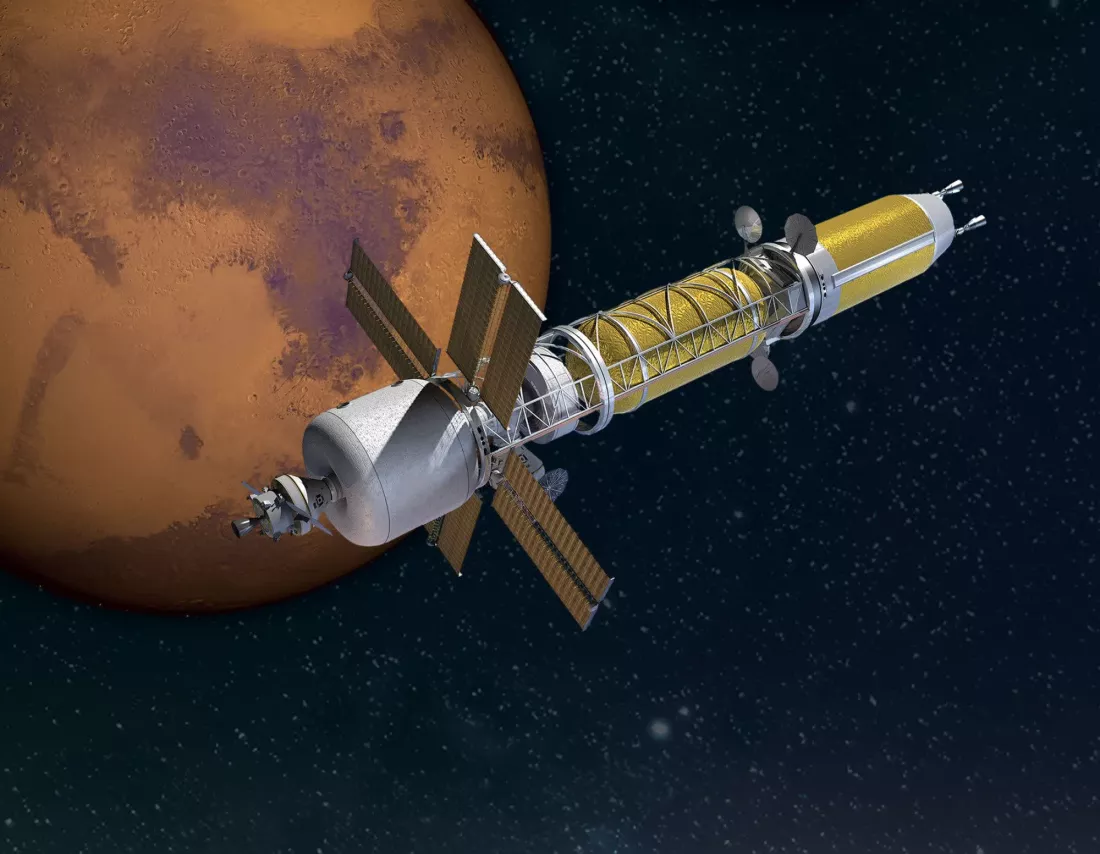Nuclear thermal rocket engine? You've got to be kidding me!..................
Posted on 01/25/2023 7:08:39 AM PST by BenLurkin
One of the bigger questions surrounding NASA’s interest in sending a crewed mission to Mars surrounds the best way to get there, and it appears the agency might have found its answer. NASA announced today that it will be developing a nuclear thermal rocket engine in collaboration with the Defense Advanced Research Projects Agency (DARPA).
The collaboration is called DRACO, or Demonstration Rocket for Agile Cislunar Operations, and it’s expected to reduce the travel time it takes to get astronauts to Mars—and potentially more distant targets in deep space. According to a press release, NASA will lead technical development of the nuclear thermal engine that will be combined with an experimental DARPA spacecraft. The two agencies will further collaborate on combining the rocket with the spacecraft ahead of its demonstration in space as early as 2027.
Reducing travel time to Mars and other locations in the solar system will subsequently reduce the amount of supplies needed for transit, which in turn can free up space for additional scientific payloads and more efficient communications equipment, NASA says. Melroy also explained that faster trips are safer trips since astronauts will spend less time being pelted by cosmic radiation while moving through space.
“When you think about national security, maneuverability is one of the things that everybody operating in air, on land, on sea, under sea really, really prizes, and its a capability that we don’t have enough of yet in the space environment,” said Stefanie Tompkins, director of DARPA, in the fireside chat.
NASA and DARPA’s timeline of a 2027 in-space test gives these agencies plenty of wiggle room to fine tune the rocket technology ahead of the planned, crewed mission to Mars in the late 2030s.
(Excerpt) Read more at gizmodo.com ...
“Nuclear-powered”
~~~
Quuuuuaaaadddde. Start the reactor!
No nooos!!! they are going to pollute space - the children will suffer.
Nuclear thermal rocket engine? You've got to be kidding me!..................
Only to arrive at an atmosphere-free and magnetic-field-free planet that features continuous and unavoidable flesh-roasting cosmic radiation in unsurvivable doses.
Must we really continue to entertain these fantasies about leaving Earth for greener pastures?
>>since astronauts will spend less time being pelted by cosmic radiation while moving through space
If you eliminate the astronauts and use radiation hardened electronics for the artificial intelligence, then you won’t need as much shielding of the nuclear propulsion either.
Oh yeah. That’s a winner!

Okey Dokey...

Another of NASA’s waste money diversity programs
“Demonstration Rocket for Agile Cislunar Operations”
Cislunar??? What, are NASA a bunch of transphobes?
“Must we really continue to entertain these fantasies about leaving Earth for greener pastures?”
Yep, we have peered at quite a few planets we will never actually be able to reach now and still haven’t found a green pasture, or even a planet capable of growing a pasture at all. It’s an exercise in wishful thinking at this point.
Nothing new NASA experimented with nuclear rockets in the 1960’s at Nevada Test Range
Principle is simple use a nuclear reactor to heat working fluid to incredible temperatures and expel the superheated gases out the exhaust nozzle
Working fluid can be number of things,, liquid hydrogen, ammonia , methane , even water
The resultant ISP (amount of thrust produced by pound of propellants) is 2 to 3 times that of most powerful chemical rockets
Yeah, and Columbus was a boondoggle, sure to fall off the edge of the Earth.
Difference is, those saying the Earth was flat were ignoring known science. Just like those who are denying that everywhere we look in outer space, we only find uninhabitable, dead rocks.
As a creature that needs water to survive...I wonder how I would feel seeing it shoot out of the end of the rocket.
But seriously, liquids are pretty heavy. How would this differ from carrying liquid fuel and some oxidizer?
I am “assuming” they would look for water along the way (Water on the moon and Mars for example.” Refueling in a zero gravity environment would certainly be more efficient, I guess.
“Pelted by gamma rays”
Quick, where’s that from?
You male it sound like their going to Fresno.
Of course and should have been considered serious for a long time. We have a huge safety history with out nuclear powered submarines. And what is space, but another sea. All we need is to build long range spaceships in modules, on the moon or in the upper atmosphere, lifting the nuclear power module up through earth’s heavy atmosphere on its own, and moving it into position for coupling with the rest of the long range modules.
Such power modules should be preplaced on Mars where a later mission will ready them as the local power plant.
Disclaimer: Opinions posted on Free Republic are those of the individual posters and do not necessarily represent the opinion of Free Republic or its management. All materials posted herein are protected by copyright law and the exemption for fair use of copyrighted works.